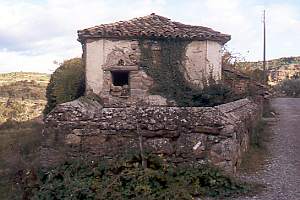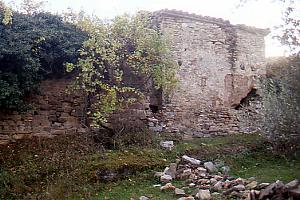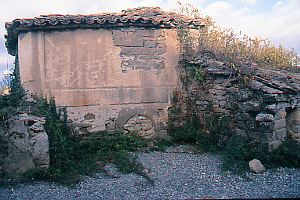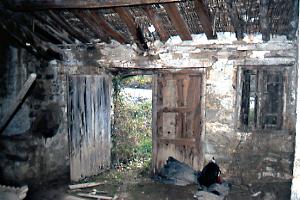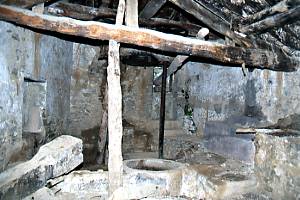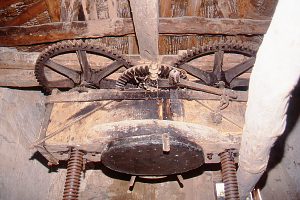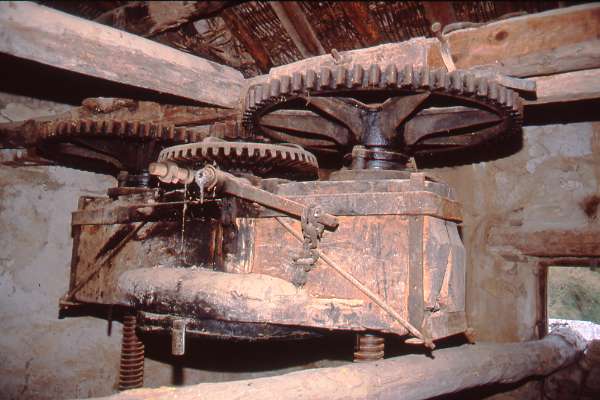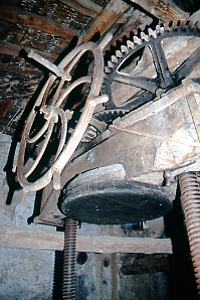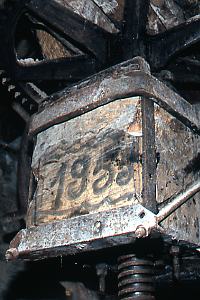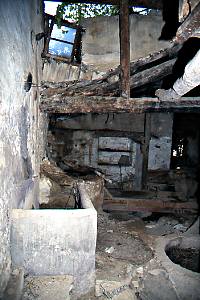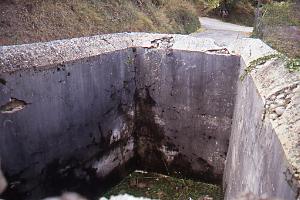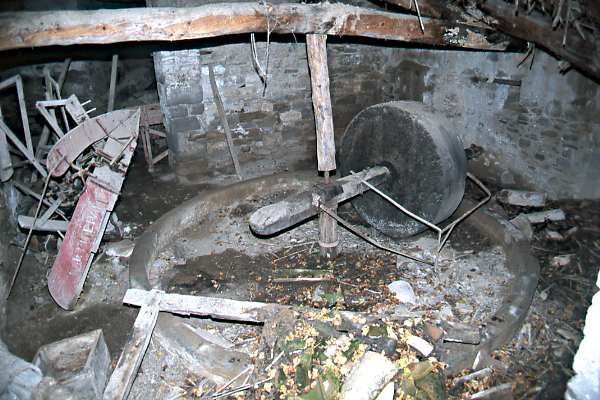Time is running out fast for this aceitero: the roof leaks and at places gives
an unimpeded view of the skies. Also the back wall (3) is in an alarmingly bad condition.
This site is worth to be listed in the Catálogo de Patrimonio Arquitectónico
y Etnográfico of Aragón (inclusion on this list means that any measure necessary
to its preservation should be taken).
The site is definitely worth preserving though: well equiped, rather big, easily reached and situated in a
village with a church declared Cultural Heritage and known as the Cathedral of Sobrarbe.
First thing that stands out when we approach the construction is the huge reservoir (2, 12, 1). Water
is an essential good in the extraction process.
The village is situated high on a hill and water supply must have been a problem. More so
because rain was probably the only source. The window (2, 8) is conveniently situated next to the press
and made it easy to draw bucket when needed. A beam —in past times surely with a winch— protrudes from the wall just above the
window (2).
The mill consists of two sections (1): the highest part (2, 4) houses the press.
At the foot of the wall a blind arch is visible. It probably is the top of a former door opening.
The level of the road must have been much lower than today; that is also very clear from picture 1.
Proceed with caution when you enter because there is quite a difference to bridge (5).
Inside two main attractions compete for our attention.
First the press (7-10): it is a type of an early generation preceding the cast iron types found at some other
places in the region. The head in its entirety runs up and down along two huge screws
which are mounted in the floor (6).
The head is a wooden block strengthened with metallic strips and
carrying several cogged wheels of different sizes (9) in order to obtain a good reduction ratio.
The lower part is made wider to give better support for the wooden disk (7) which
conveyed the pressure onto the heap of mats.
No company label is attached to the press, but the
year 1953
is written on one of the side panels. We've found a similar press in the
mill of Mondot
and in
Troncedo which is also in good shape.
The work floor is a huge mess but several decanter vessels rise above the
rubble (6, 11).
The inner side of the front wall is lined with containers (13, algorines)
for the storage of fresh produce. Almost all the remaining space is taken by the
embalse (14):
the circular space where the olives where crushed. Notice the iron rods of the guiding system. No
trace of a hopper nor a box where the mash was collected (see
Mipanas (32)).



